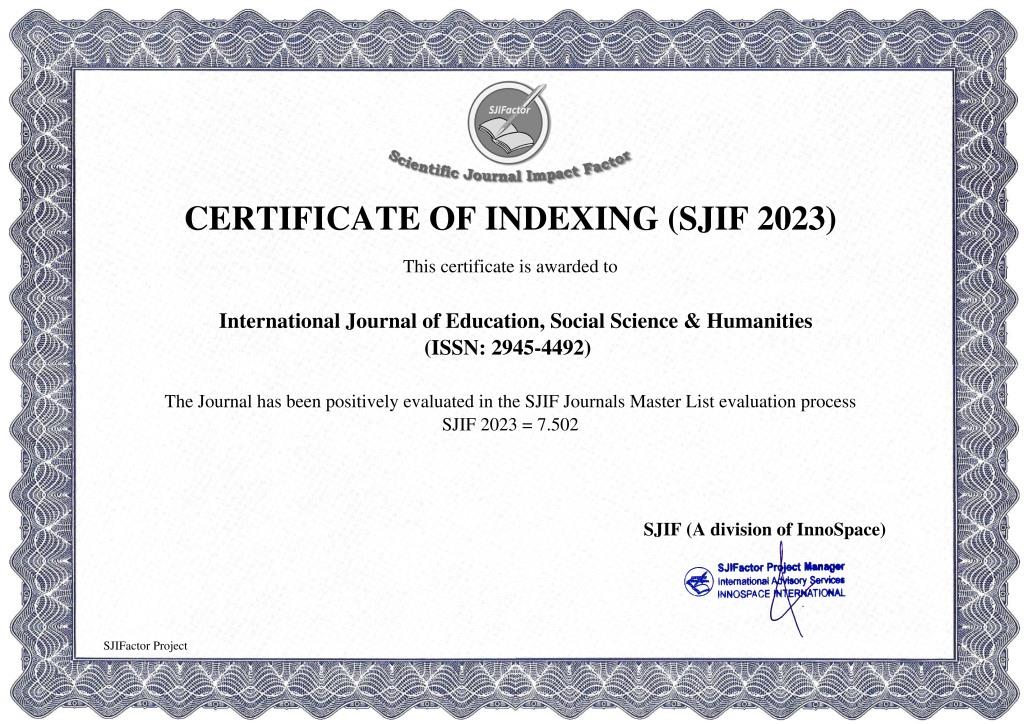THE IMAGE OF ARTIST AND ISSUE OF PSYCHOLOGYc
Keywords:
the image of the artist, the image of Navoi, the creative person, light and color, the method of giving a barcode, the state of ecstasy, the psychology of creation, the creative plan, the composition..Abstract
In the article, the image of the artist is studied as an aesthetic ideal. Omon Mukhtor's novel dilogy "Navoi and the artist Abulkhair" explores the spiritual world of the creative person, the psychology of creativity, the artistic interpretation of the creative process and its role in the expression of the author's ideological and artistic intentions. The artist's artistic interpretation highlights the problem of artistic synthesis, the artistic and aesthetic function of light and color, the methods and genres of fine art.
Background. The literature of the independence period, in particular, prose which is rich in non-traditional imagery, semantic and formal innovations is in need of research. It is especially noteworthy that new horizons of novelism were discovered, the art of image creation was improved, new poetic methods were utilized in the interpretation of the hero's biography. In particular, the study of creative thinking, the unconventional expression of mental psychological interpretations through the image of the creative person is relevant to issues of creative psychology and poetics.
Objective. In fiction, the problem of artistic mastery is based on the interpretation of the image of a creative person-artist as an aesthetic ideal, to show the role of creative thinking in expressing the ideological and artistic intentions of the author.
Methods. The following methods as description, complex analysis, comparative-typological methods, biographical and hermeneutic approaches were used as research methods.
Findings. Among the images, the image of a creative person is important for its richness of psychological interpretations, the breadth of the author's ability to express the "I", the impact and authenticity of the images, the connection of analysis to the issue of artistic synthesis.
Conclusions. The interpretation of the image of a creative person - an artist, writer, musician - is based on many years of artistic experience in Uzbek and world literature. Depending on its position in the play, the protagonist is distinguished as an episodic image, an image of a historical figure according to the method of creation, and an artistic textured image. The artistic interpretation of the artist’s image can be an important object of research with the discovery of new poetic methods with its abundance of images in the combination of word art and fine art.
References
Mirmuhsin.( 2001). Me'mor. –T., “Sharq”.
Solijonov Y.( 2013). Mo‘jizalar sehri. –T., “Adib”, Р.54.
Muhammadjonova G. (2017). Omon Muxtor romanlarida Navoiy obrazi.// “O‘zMU xabarlari”, №1. P. 281-284.
Quronov D., Mamajonov Z., Sheralieva M.( 2010). Adabiyotshunoslik lug‘ati. –T.,”Akademnashr”, P. 226.
Русские писатели о литературном труде. Том 4, –Л., 1957. Стр. 490.
Hamdam Ulug‘bek.( 2014). Vatan haqida qo‘shiq. –T., “Akademnashr”.
Muxtor Omon. (2006 ). Navoiy va rassom Abulxayr. –T., “Sharq”.














